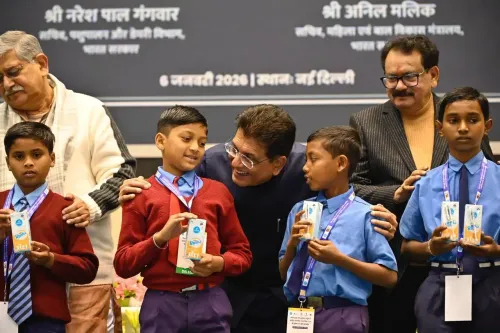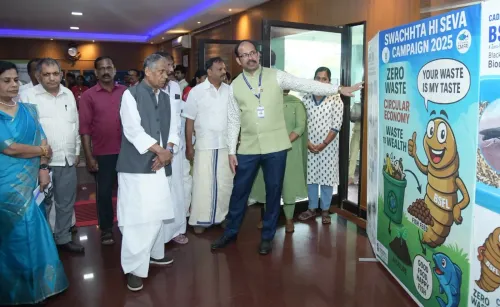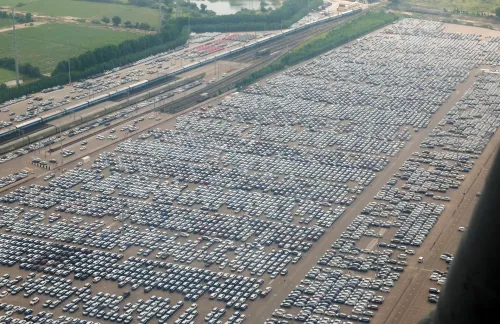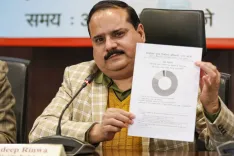How has the supply of ethanol-blended petrol increased over four years?
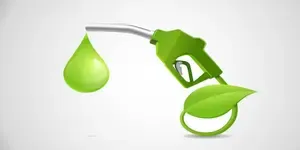
Synopsis
Key Takeaways
- Ethanol blending in petrol has surged dramatically in four years.
- The blending percentage is projected to reach 20% by 2025-26.
- Farmers benefit from higher prices for sugarcane due to increased ethanol production.
- This initiative is expected to reduce CO2 emissions and save foreign exchange.
- The government has implemented several supportive measures for ethanol production.
New Delhi, July 28 (NationPress) The supply of ethanol-blended petrol at retail outlets operated by public sector oil companies, including Indian Oil and Bharat Petroleum, has surged from 173 crore litres in the Ethanol Supply Year (November-October) 2019-20 to over 700 crore litres in the Ethanol Supply Year (ESY) 2023-24. This increase has been accompanied by a rise in the blending percentage, which grew from 5 percent in ESY 2019-20 to approximately 14.6 percent in ESY 2023-24, as reported to Parliament on Monday.
As for the current Ethanol Supply Year (ESY) 2024-25, by June 30, 2025, a total of 661.06 crore litres of ethanol has been blended with petrol, achieving a blending percentage of 18.93 percent, as stated by Minister of State for Petroleum and Natural Gas Suresh Gopi in a written reply to the Rajya Sabha.
In June 2025, the ethanol blending rate reached 19.92 percent. All retail outlets of Public Sector Oil Marketing Companies nationwide, featuring petrol sales, now provide E20 petrol, the minister added.
Petroleum Minister Hardeep Singh emphasized India's milestones in the biofuels arena, noting that nearly 20 percent ethanol blending has been accomplished in 2025, a remarkable leap from 1.53 percent in 2014. This success has led to Rs 1.4 lakh crore in foreign exchange savings, the substitution of 238 lakh metric tonnes of crude oil, a reduction of 717 lakh metric tonnes in CO2 emissions, and direct payments totaling Rs 1.21 lakh crore to farmers.
Farmers have benefited as sugar mills producing ethanol are now able to offer higher prices for sugarcane and settle outstanding dues promptly.
Encouraged by these results, the government has moved the target for 20 percent ethanol blending in petrol forward from 2030 to ESY 2025-26.
To reach the 20 percent ethanol blending goal by ESY 2025-26, the government has implemented various measures, including a detailed roadmap for ethanol blending in India, expansion of feedstock for ethanol production, a remunerative procurement price under the EBP Programme, a reduction of the GST rate to 5 percent on ethanol for the EBP Programme, and amendments to the Industries (Development & Regulation) Act to facilitate ethanol movement across states for blending.
An interest subvention scheme aimed at enhancing ethanol production capacity has also been initiated, alongside regular expressions of interest (EoI) by public sector oil marketing companies for ethanol procurement.


